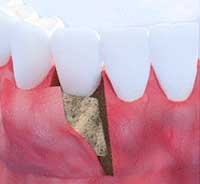 Researchers report development of a membrane that helps periodontal tissue regenerate when implanted into the gums of rats.
Researchers report development of a membrane that helps periodontal tissue regenerate when implanted into the gums of rats.
Thursday, March 21, 2019
Nanomembrane could help regrow tissue lost to periodontal disease
 Researchers report development of a membrane that helps periodontal tissue regenerate when implanted into the gums of rats.
Researchers report development of a membrane that helps periodontal tissue regenerate when implanted into the gums of rats.
Making solar cells is like buttering bread
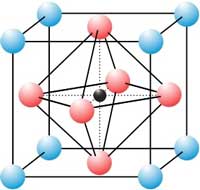 Formamidinium lead iodide is a very good material for photovoltaic cells, but getting the correct and stable crystal structure is a challenge. The techniques developed so far have produced rather poor results. Researchers have now cracked it - using a blade and a dipping solution.
Formamidinium lead iodide is a very good material for photovoltaic cells, but getting the correct and stable crystal structure is a challenge. The techniques developed so far have produced rather poor results. Researchers have now cracked it - using a blade and a dipping solution.
Nanotechnology approach may lead to precision-based strategy for triple negative breast cancer
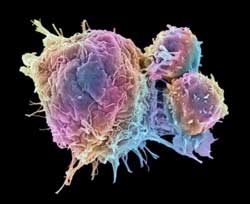 Researchers recently reported several important findings related to triple negative breast cancer and its future treatment.
Researchers recently reported several important findings related to triple negative breast cancer and its future treatment.
In a new quantum simulator, light behaves like a magnet
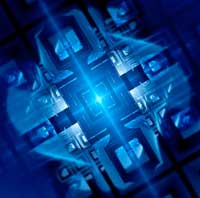 Physicists propose a new 'quantum simulator': a laser-based device that can be used to study a wide range of quantum systems. Studying it, the researchers have found that photons can behave like magnetic dipoles at temperatures close to absolute zero, following the laws of quantum mechanics. The simple simulator can be used to better understand the properties of complex materials under such extreme conditions.
Physicists propose a new 'quantum simulator': a laser-based device that can be used to study a wide range of quantum systems. Studying it, the researchers have found that photons can behave like magnetic dipoles at temperatures close to absolute zero, following the laws of quantum mechanics. The simple simulator can be used to better understand the properties of complex materials under such extreme conditions.
Engineers demonstrate metamaterials that can solve equations
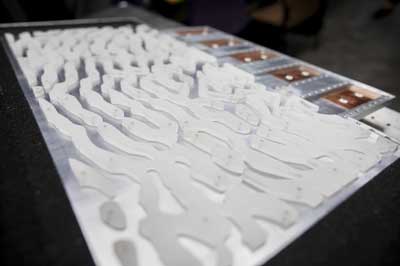 This 'photonic calculus' would work by encoding parameters into the properties of an incoming electromagnetic wave and sending it through a metamaterial device; once inside, the device's unique structure would manipulate the wave in such a way that it would exit encoded with the solution to a pre-set integral equation for that arbitrary input.
This 'photonic calculus' would work by encoding parameters into the properties of an incoming electromagnetic wave and sending it through a metamaterial device; once inside, the device's unique structure would manipulate the wave in such a way that it would exit encoded with the solution to a pre-set integral equation for that arbitrary input.
Magnetic micro-boats
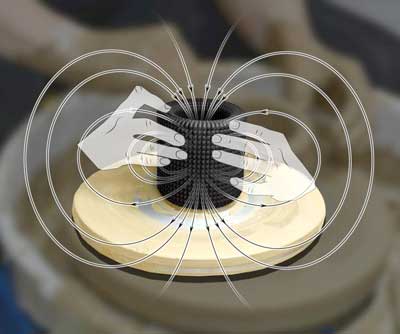 Researchers have created magnetic microparticles, with a newly developed method, that could pave the way for building micro-motors or guiding drugs in the human body to a target, like a tumor. The preparation of such structures as well as their remote-control can be regulated using magnetic fields and therefore can find application in an array of domains.
Researchers have created magnetic microparticles, with a newly developed method, that could pave the way for building micro-motors or guiding drugs in the human body to a target, like a tumor. The preparation of such structures as well as their remote-control can be regulated using magnetic fields and therefore can find application in an array of domains.
Materials could delay frost up to 300 times longer than existing anti-icing coatings
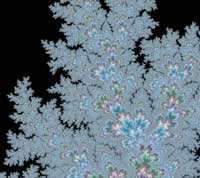 Scientists describe for the first time several unique properties of materials known as phase-switching liquids, or PSLs, that hold promise as next-generation anti-icing materials. PSLs can delay ice and frost formation up to 300 times longer than state-of-the-art coatings being developed in laboratories.
Scientists describe for the first time several unique properties of materials known as phase-switching liquids, or PSLs, that hold promise as next-generation anti-icing materials. PSLs can delay ice and frost formation up to 300 times longer than state-of-the-art coatings being developed in laboratories.
Golden ball in a golden cage
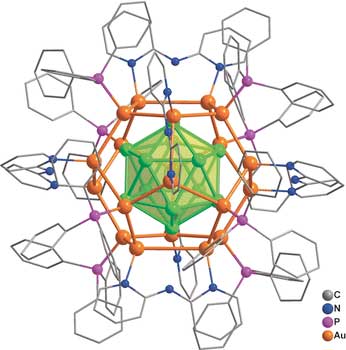 'Golden fullerene': ligand-protected nanocluster made of 32 gold atoms.
'Golden fullerene': ligand-protected nanocluster made of 32 gold atoms.
Researchers boost intensity of nanowire LEDs
 Nanowire specialists have made ultraviolet light-emitting diodes (LEDs) that, thanks to a special type of shell, produce five times higher light intensity than do comparable LEDs based on a simpler shell design.
Nanowire specialists have made ultraviolet light-emitting diodes (LEDs) that, thanks to a special type of shell, produce five times higher light intensity than do comparable LEDs based on a simpler shell design.
True-meaning wearable displays: Self-powered, washable and wearable
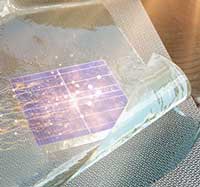 Researchers have developed a textile-based wearable display module technology that is washable and does not require an external power source.
Researchers have developed a textile-based wearable display module technology that is washable and does not require an external power source.
Subscribe to:
Comments (Atom)
